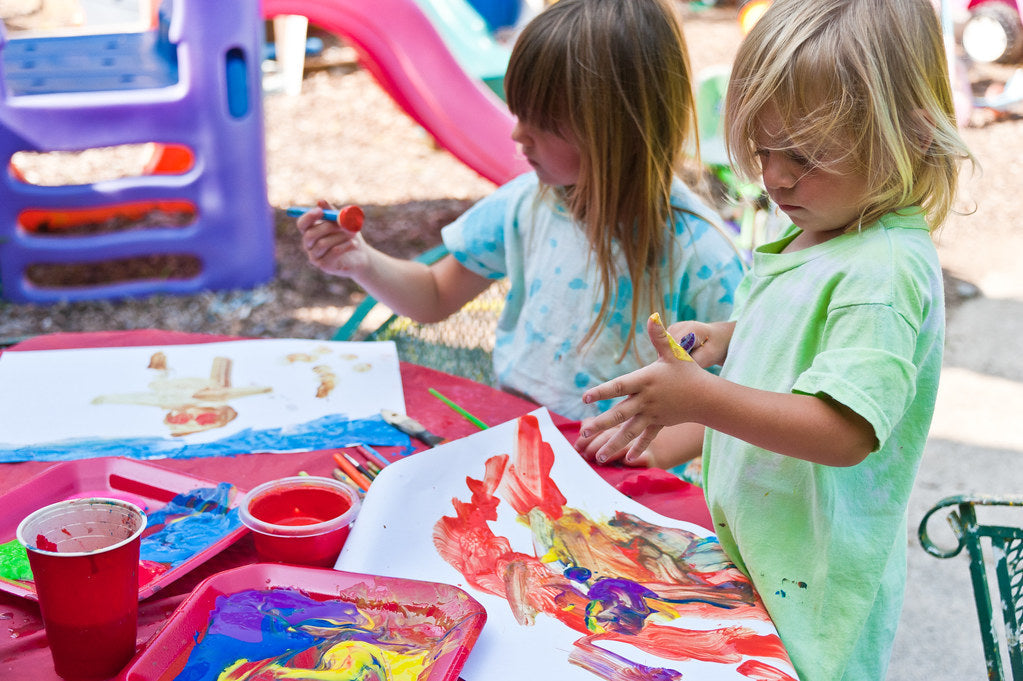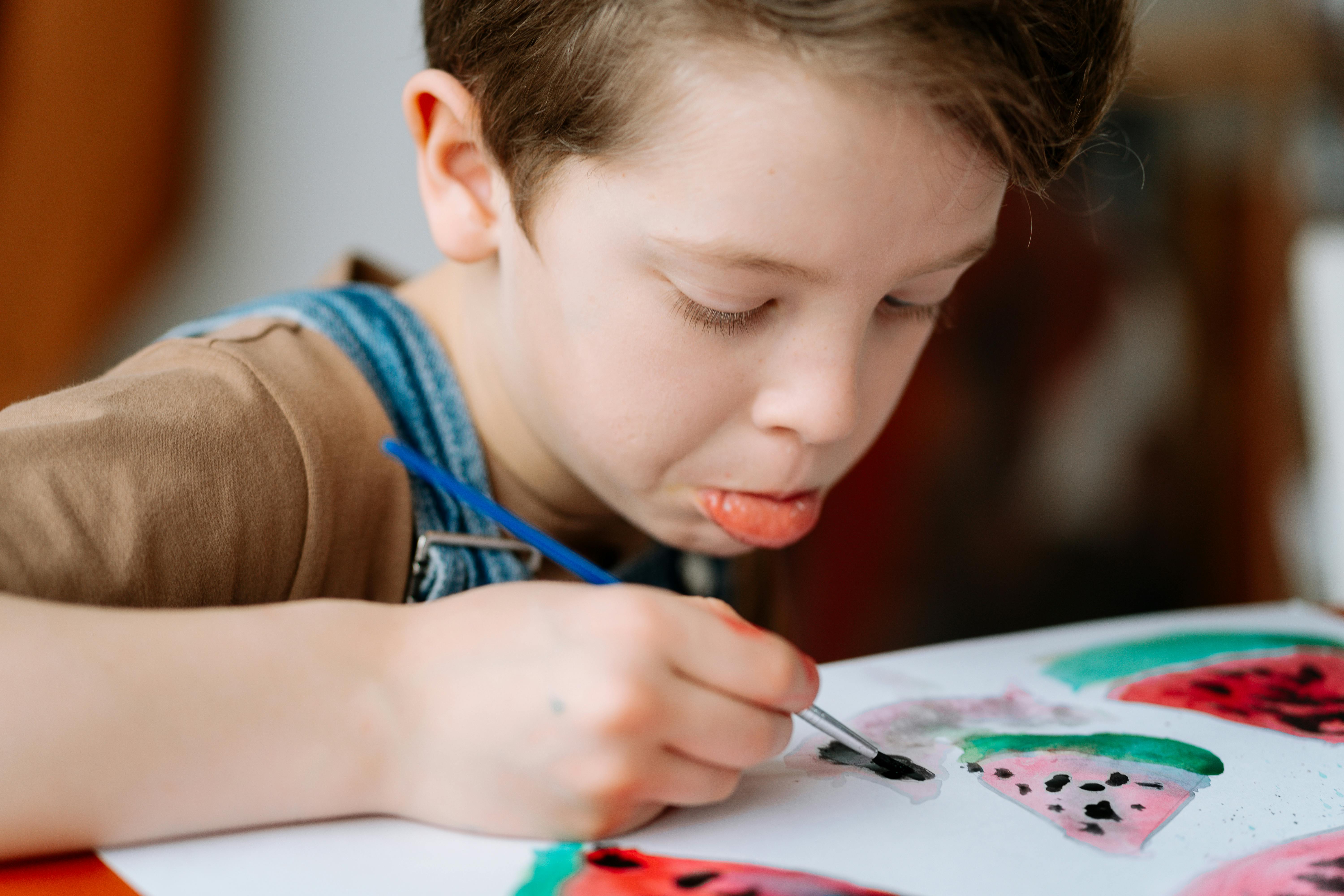
STEM + Art = STEAM
November 16, 2021
By Beth Herrild
Have you noticed STEM being promoted to the exclusion, or at least minimization, of the arts? Here at Outside the Box Creation, we believe STEM should have an A in it for art. STEM + Art = STEAM (science, technology, engineering, ART and math). The STEAM acronym has been slow to gain traction, but is becoming increasingly popular, and for good reasons.
Getting Out of Black & White Thinking
Try as we might, our society still reinforces black/white-either/or thinking. Schools and parents often feel like they need to prioritize what they should stress and what can fall by the wayside, which is totally understandable. It certainly makes time and funding decisions much easier. But let’s face it, in real life issues aren’t always black or white; there’s a ton of gray and so many things are interconnected. That’s why we try to incorporate other subjects into our art projects for both box subscribers and Insider’s Club, digital members.
Creativity is More Important Than Ever
Many people believe that while STEM involves logic and facts while art is all about imagination and creativity. That couldn’t be further from the truth. According to LinkedIn, employers are looking for workers who have both hard technical skills and the soft skills to make them usable. The most in demand skill is creativity. We tend to think of creativity only in terms of producing works of art, when in fact, that skill translates to almost everything we do. It’s easy to imagine how creativity and design thinking contribute to engineering, designing aesthetically pleasing structures that are also structurally sound. But what about our current climate crisis? That problem is going to take some pretty creative thinking to solve. According to LinkedIn, “there is no better investment you can make today than strengthening your creative skills.”
But I’m Not Creative
Creativity isn’t something you have or don’t have. Sure, some people seem to be born with creativity oozing out of their pores, but it can also be nurtured and grown. Creativity is like a muscle, and using it makes it stronger. How can parents help? Expose your kids to more interdisciplinary experiential and open-ended projects. Let them struggle a bit. Be less attached to perfect products and outcomes and focus more on the process. For ways to do that, read our blog post, Pretty Projects or a Better Process? Also, encourage kids to brainstorm with others. Collaboration is a big part of the design thinking process. Along the way, they will also develop self-confidence.
The Design Thinking Process
The first step in the design thinking process is to develop an empathetic understanding of the problem you are trying to solve. Exposure to the visual arts has proven to enhance empathy. The next step is to define the problem, and then we must generate ideas. Parents can help kids by encouraging them to work with others in brainstorming and coming up with ideas. After ideas are generated, then a prototype is made and tested in some way. And then improvements are made. The design process is a non-linear iterative process, which means it’s a circle of creatively coming up with ideas, testing, and improving. While kids don’t have to do this process with others, if they can collaborate on at least part of it, everyone benefits.
Self-confidence feeds budding creativity and tempers it with empathy. Art helps children (and adults) develop self-confidence and empathy so they look at things from different perspectives, and understand that there is more than one way to solve a problem. It also gives them the courage to speak up when they have a better way of doing something. With the complexity of our current problems and the diverse nature of our global population, this is imperative.
Without art at the roots, science will sit stunted and unable to flourish because the only way for science to do its magic is with applied creative problem solving, design thinking, and the ability to communicate ideas—ART! STEAM teaches kids to look for an answer to a problem instead of believing that there is only one right answer to every problem. If we limit kids to thinking that every problem only has one correct answer, there will be little innovation. STEAM is what really encourages out of the box thinking. And heaven knows we’re going to need our young people to be innovative thinkers in order to solve some of the difficult problems our world is facing right now.

On Ramp to STEM Careers
Adding the art into STEM not only helps learners connect to other subjects in more enjoyable ways, but we need students to create and design objects and solutions that are attractive, functional, innovative, and holistic. Art also provides a more accessible on-ramp into STEM careers for creative people who may not have explored these careers before. I envision a STEAM world where we have interdisciplinary teams, all members equally respected and contributing, to attack the world’s most critical problems. The fastest way for us to get there is to teach our children science, technology, engineering, math AND the arts with equal enthusiasm, making intentional connections as often as possible and allowing our kids to move freely among them all. We must help our youth become super creative engineers who can think outside the box and design everything from eco-friendly packaging to plastic recycling systems that can save our fragile ecosystem. We need creative people to redesign all sorts of processes and products if we are going to survive. Stefan Mumaw, who has authored six books on creativity, defines creativity this way: “Creativity is problem-solving with relevance and novelty.”

Our Outside the Box Creation art box subscriptions and Insider’s Club, fully digital memberships, help kids literally think outside the box and develop their creativity and creative problem solving skills. Our projects are far from paint by numbers. We strive to give enough structure and some techniques, for kids to all feel successful. But the, we always offer ways to be creative and encourage kids to make their own artistic decisions. Most people, who aren’t artists themselves, don’t realize that a large part of creating art is creative problem solving.

